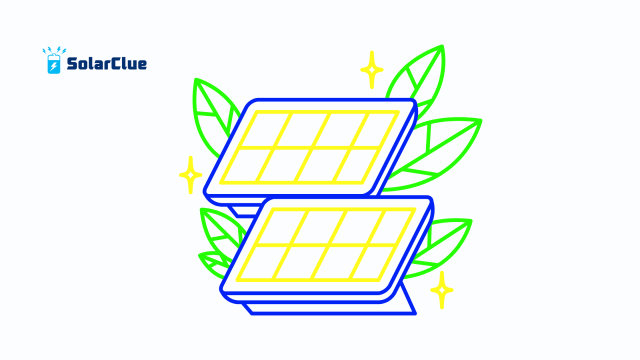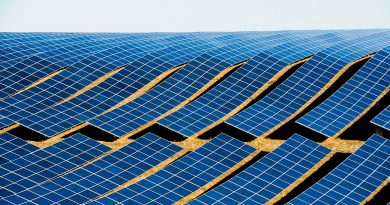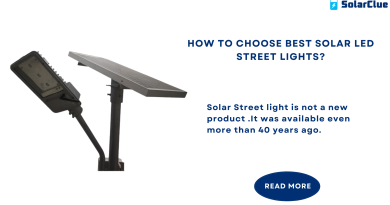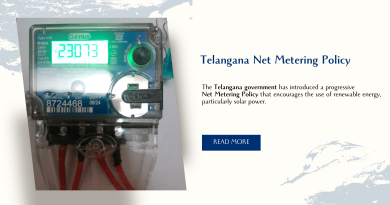How to Check and Understand Solar Meter Reading
If you’ve installed a solar power system at your home or business, you’ve probably come across the solar meter—a device that shows how much electricity your panels are generating, using, and sometimes even exporting back to the grid. But unless you’re an expert, interpreting your solar meter reading can be confusing. Don’t worry—we’re here to make it simple.
In this blog, we’ll explain everything you need to know about solar meter reading, including what it shows, how to read it, why it’s important, and how it helps track your energy savings.
Table of Contents
What Is a Solar Meter?
A solar meter (also called a net meter or bidirectional meter) is a digital or analog device installed along with your solar power system. It records how much electricity your solar panels generate and how much you consume from the grid. It also tracks the surplus energy sent back to the utility company, helping calculate your savings under net metering.
Why Solar Meter Reading Matters
Understanding your solar meter reading is essential because it:
-
Helps monitor your solar power production
-
Shows how much energy you’re using vs. generating
-
Allows you to estimate your electricity bill savings
-
Helps identify performance issues in your solar system
-
Ensures proper billing from your electricity provider
Whether you’re a homeowner or running a business, this knowledge helps you take full advantage of your solar investment.
Types of Solar Meters
Before we dive into how to read them, here are the common types of solar meters used in India:
1. Net Meter
-
Records both imported and exported electricity
-
Shows the net usage that is billed to you
-
Ideal for grid-connected systems
2. Generation Meter
-
Records only the electricity generated by your solar panels
-
Often used for subsidy calculations
3. Bidirectional Digital Meter
-
Advanced meters that track flow in both directions
-
Provides real-time data and remote monitoring options

How to Read a Solar Meter
Reading a solar meter might vary depending on the brand and type, but the common parameters include:
1. Import (kWh)
This is the energy you consume from the grid when your solar generation is insufficient.
2. Export (kWh)
The extra electricity your system generates and sends back to the grid.
3. Generation (kWh)
Total energy generated by your solar panel system.
4. Net Reading (kWh)
This is the difference between import and export. If exports are higher, your bill will be reduced accordingly or even credited.
Here’s a simple example:
-
Import: 100 units
-
Export: 60 units
-
Net Usage: 40 units (you are billed for this)
Steps to Check Your Solar Meter Reading
-
Locate the Meter: Usually installed near your main electricity board or inverter.
-
Scroll Through the Display: Press the button (for digital meters) to scroll through metrics like kWh, Voltage, Current, etc.
-
Note Down the Readings: Record import, export, and generation values for analysis.
-
Compare Monthly: This helps you track performance and seasonal variations in solar output.
Tips to Maximize Solar Savings Using Meter Data
-
Track readings monthly to monitor output and spot any drops in generation.
-
Clean your solar panels regularly to ensure optimal performance.
-
Shift power usage (like washing machines or air conditioning) to daytime when solar power is available.
-
Check inverter and connections if you notice low generation on sunny days.
-
Use smart monitoring apps (if available) for real-time tracking.
Common Issues with Solar Meter Reading
-
Incorrect net metering configuration
-
Display errors in old analog meters
-
Export readings not updating
-
Billing mismatches due to manual errors
If you face any of these issues, it’s best to contact your solar installer or utility company.
Future of Solar Metering in India
With the growth in rooftop solar adoption, DISCOMs and the government are moving towards smart solar meters that offer remote monitoring, error detection, and real-time analytics. This shift will make tracking your solar performance even easier and more efficient.
FAQs
Q1. How often should I check my solar meter reading?
You can check it weekly or monthly to track performance and savings.
Q2. What if my solar meter reading seems incorrect?
Contact your installer or utility provider to check for calibration or configuration errors.
Q3. Can I access solar meter readings remotely?
Yes, many modern meters and inverters offer app-based monitoring for real-time data.
Q4. Do I still get a bill if I export more power than I use?
Yes, but the bill may show a credit or minimal charges based on your export.
Q5. Is it compulsory to have a solar meter?
For grid-connected systems and to avail subsidies or net metering, a solar meter is mandatory.
Conclusion
Understanding your solar meter reading empowers you to track energy savings, detect issues, and make smarter usage decisions. It’s more than just a number—it’s a powerful tool to help you make the most of your solar system.
Want to take control of your electricity bills and start your solar journey?
👉 Visit solarclue.com or blog.solarclue.com to explore the best solar solutions for your needs!




